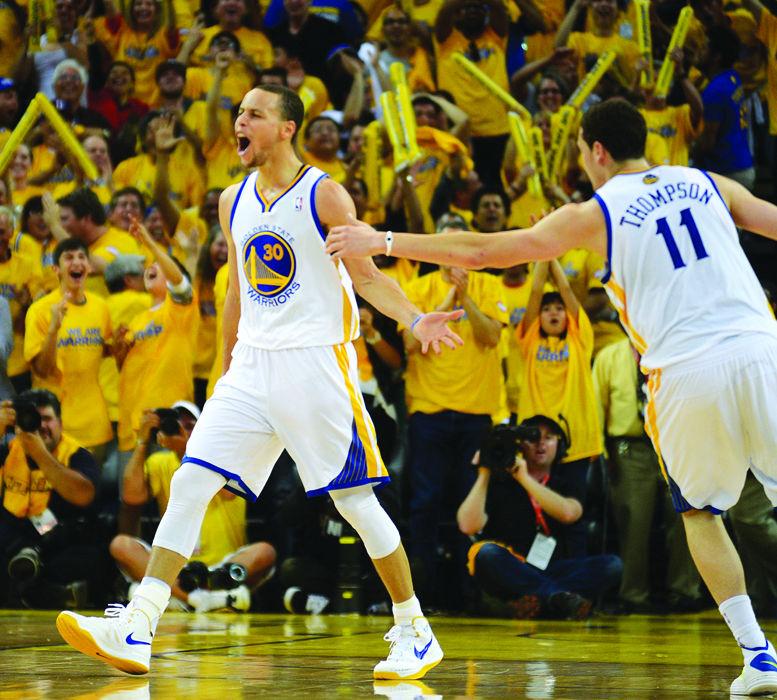Despite world title, basketball viewership still down
September 16, 2014
The United States men’s team won the FIBA World Cup on Sunday when it beat the Serbian men’s team 129-92.
Not the FIFA World Cup that happened months ago — I’m talking about the FIBA World Cup, for basketball.
The International Basketball Federation, known as FIBA, held an international basketball tournament during the first two weeks of September with 76 games. Countries such as Spain, France, Serbia and the United States competed for the title of world champion.
Before 2012, the tournament was known as the FIBA World Championship. In 2012, FIBA decided to rebrand the tournament and changed the name to the FIBA World Cup. The expectation of the rebranding was that the name change would allow the tournament to be recognized as one of the world’s biggest and best sporting events. Not only would the tournament gain prestige as a result of the name change, but it would also gain more viewers.
That wasn’t really the case — just more than one million Americans watched the United States team play in each of its tournament games, marking only a slight increase in viewership from the 2010 FIBA World Championship.
There are a number of reasons why the FIBA World Cup didn’t attract many American viewers. Mostly, it came down to timing.
First, most games occurred in the middle of a typical workday. Some of the tournament games were played at the same time as college football and NFL games. Also, this year’s men’s team didn’t have a lot of superstars — both Kevin Love and Kevin Durant dropped out, and Paul George broke his leg, forcing him to miss the tournament.
These reasons could explain the World Cup’s poor television ratings. However, bad timing might overshadow a bigger problem: Americans just don’t care that much about the NBA.
While television ratings for NBA Finals games have increased since 2003, the ratings for regular season games have not. In 1996, NBA games received an average 5.0 rating on network TV. In 2014, games received a measly average rating of 2.3.
NBA regular season game viewership doesn’t even compare to the tens of millions of viewers that NFL games have each week. NBA ratings are more comparable to MLB ratings, even though America’s pastime has steadily lost viewers over the past 10 years.
But television ratings for NBA games were not always this bad.
Throughout the ’80s and ’90s, basketball’s popularity skyrocketed. NBA Finals games consistently held ratings over 13.0, and NBA All-Star Games rated twice as high as they do now. The NBA was so popular back then because the league had a fierce rivalry between two very likeable players in Magic Johnson and Larry Bird, and it had a transcendent superstar that made every NBA game must-see television in Michael Jordan.
Today’s league has a great rivalry between LeBron James and Kevin Durant and a superstar who is bigger than basketball itself in LeBron James. Yet today’s ratings do not match the ratings of the ’80s and ’90s.
NBA Commissioner Adam Silver recognized the disappointing television ratings that NBA games receive and has proposed solutions to the problem.
Silver wants to require that prospects play two years in college before they are eligible to play in the NBA, instead of one year as the rule currently mandates. By playing in college for at least two years instead of one, college prospects will gain a greater fan base. He hopes that these players will bring their fans to the NBA and increase the league’s popularity.
The idea has, for good reason, attracted a lot of criticism. There is no guarantee that college basketball fans will become NBA fans once their favorite player is drafted. It’s more likely that those fans will find a new college player to follow rather than following a player into the NBA. Raising the eligibility would also help college basketball keep its best players for a longer period of time, and the NBA would be helping its competitor.
So, Silver may have to find a better way to increase the popularity of the NBA. And, despite how poorly rated it was, this year’s FIBA World Cup holds the answer.
This year’s United States men’s team was the youngest ever, and superstars like James and Durant didn’t play for the team. Despite these setbacks, it became the first team in the history of FIBA to win every tournament game by more than 20 points. Not even Shaquille O’Neal, future Hall-of-Famers Reggie Miller and Joe Dumars and the rest of the stacked 1994 team, could do that.
The results of this year’s FIBA World Cup show that the NBA is full of really young and really talented players like Kyrie Irving, Anthony Davis, Klay Thompson and DeMarcus Cousins.
These players need better exposure.
Clearly, the NBA isn’t as superstar-driven as we all think — ratings still suffer despite the number of games that LeBron James and Kevin Durant play on national television. If the NBA showed more nationally televised games with its young stars, the public would realize how outstanding the talent in the league is.
The NBA should demonstrate how many great young players it has. It should emphasize how talented these players are, and the league should work to foster rivalries between its young players. That’s what people want to see. While featuring budding stars may not yield immediate results in terms of viewership, it will be great for the league in the long run as young players become more recognizable.
Of course, all of this really depends on how well the young players perform during the regular season. If they play less than spectacularly, there’s no way they could help with the league’s popularity.
But, judging by how well they played during the FIBA World Cup, I think the future superstars of the NBA will play just fine.



